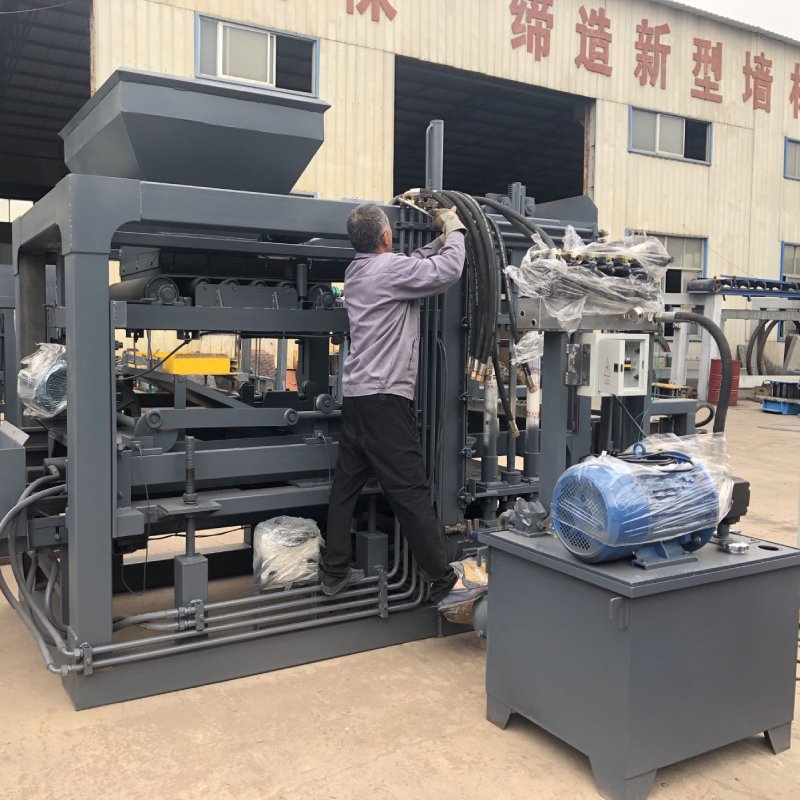
Image source :Aiweiblockmachine
Case Studies of Successful Brick Making Machine Investments
Case Study 1: Modernization and Efficiency Enhancement
Scenario: A medium-sized brick manufacturing company, “BrickTech Innovations,” operating for decades with traditional methods, decides to invest in advanced brick making machines to modernize its operations.
Investment Details:
- Initial Investment: $1.5 million for purchasing state-of-the-art automated brick making machines.
- Operational Costs: $120,000 annually (including labor, maintenance, utilities, and raw materials).
Strategy and Outcome:
- Strategy: The company analyzed its outdated manual processes and realized the potential for efficiency improvements with modern equipment.
- Outcome: By adopting the new machines, BrickTech Innovations significantly increased its production capacity and quality. Labor costs were reduced by 30%, and energy efficiency led to a 20% reduction in utility expenses.
- Return on Investment: Within 3 years, the company recouped its initial investment and experienced a 25% increase in annual profits compared to the pre-investment period.
Case Study 2: Niche Product Differentiation
Scenario: A small startup, “EcoBricks,” seeks to enter the brick manufacturing industry with a unique selling proposition focused on environmentally friendly construction materials.
Investment Details:
- Initial Investment: $350,000 to purchase specialized brick making machines that use recycled materials.
- Operational Costs: $70,000 annually (including labor, maintenance, utilities, and raw materials).
Strategy and Outcome:
- Strategy: EcoBricks identified a gap in the market for sustainable construction materials and invested in innovative machinery that could produce bricks using recycled materials.
- Outcome: The company’s unique product offering gained attention from environmentally conscious consumers, architects, and contractors. Demand grew steadily as awareness of their eco-friendly approach spread.
- Return on Investment: Within 2 years, EcoBricks achieved breakeven and saw a rapid increase in sales. The investment led to positive brand recognition, and the company expanded its product line to include other sustainable building materials.
Case Study 3: Expansion and Market Penetration
Scenario: An established brick manufacturer, “SolidBricks Inc.,” aims to expand its market reach by investing in additional production capacity.
Investment Details:
- Initial Investment: $2.2 million for purchasing high-capacity brick making machines and expanding facilities.
- Operational Costs: $180,000 annually (including labor, maintenance, utilities, and raw materials).
Strategy and Outcome:
- Strategy: SolidBricks Inc. analyzed growing demand in nearby regions and decided to invest in expanding its production capacity to meet the increasing orders.
- Outcome: With the new machines and expanded facilities, the company could fulfill larger contracts and take advantage of bulk orders. This expansion allowed them to secure contracts for significant infrastructure projects.
- Return on Investment: Within 4 years, the company not only recovered its investment but also experienced a 40% increase in revenue. The expanded production capabilities strengthened their market presence and positioned them as a preferred supplier for large-scale projects.
Case Study 4: Vertical Integration and Value Addition
Scenario: A construction company, “BuildMasters,” decides to vertically integrate its operations by investing in brick making machines to produce its own construction materials.
Investment Details:
- Initial Investment: $1 million for purchasing brick making machines and setting up a dedicated production facility.
- Operational Costs: $90,000 annually (including labor, maintenance, utilities, and raw materials).
Strategy and Outcome:
- Strategy: BuildMasters identified a cost-saving opportunity by producing its own bricks instead of purchasing them externally. This vertical integration would also allow them to control the quality and supply of materials.
- Outcome: By producing their own bricks, BuildMasters reduced material costs for their construction projects by 15%. Additionally, they leveraged their vertically integrated model to market their projects as more cost-effective and reliable.
- Return on Investment: Within 2.5 years, the company recovered its investment and saw increased profitability due to reduced material expenses and a competitive edge in the construction market.
Case Study 5: Export-Oriented Expansion
Scenario: A well-established brick manufacturing company, “GlobalBricks,” decides to invest in advanced brick making machines to expand its production capabilities and tap into international markets.
Investment Details:
- Initial Investment: $3.5 million for purchasing high-capacity, automated brick making machines and expanding the factory’s infrastructure.
- Operational Costs: $250,000 annually (including labor, maintenance, utilities, and raw materials).
Strategy and Outcome:
- Strategy: GlobalBricks recognized that its quality products had potential in global markets, especially in regions with booming construction industries.
- Outcome: The company’s investment in state-of-the-art machines not only increased its production capacity but also improved the consistency and quality of its bricks. GlobalBricks successfully entered international markets and secured contracts for large-scale projects in several countries.
- Return on Investment: Within 5 years, the company not only covered its investment costs but also established a strong presence in international markets, resulting in a 50% increase in revenue compared to its pre-expansion period.
Case Study 6: Technological Advancements and Differentiation
Scenario: A family-owned brick manufacturing business, “Heritage Bricks,” decided to invest in cutting-edge brick making machines to differentiate itself in a competitive market.
Investment Details:
- Initial Investment: $800,000 for purchasing advanced machinery with innovative features for producing unique brick designs.
- Operational Costs: $80,000 annually (including labor, maintenance, utilities, and raw materials).
Strategy and Outcome:
- Strategy: Heritage Bricks aimed to stand out by offering a wide range of creative and custom-designed bricks, appealing to architects and builders looking for distinctive options.
- Outcome: The investment in technologically advanced machines allowed Heritage Bricks to produce intricate designs that were previously challenging to create. Their unique offerings garnered attention and established them as a go-to source for specialized bricks.
- Return on Investment: Within 3.5 years, the company not only covered its investment costs but also experienced a 30% increase in revenue, largely due to the premium pricing they could command for their innovative products.
These case studies illustrate various strategic approaches that businesses can take when investing in brick making machines. Each strategy reflects a different market opportunity and showcases how a well-executed investment can lead to increased efficiency, market expansion, differentiation, and overall business growth. However, remember that real-world success depends on thorough research, effective execution, adaptability, and the ability to navigate challenges along the way.
